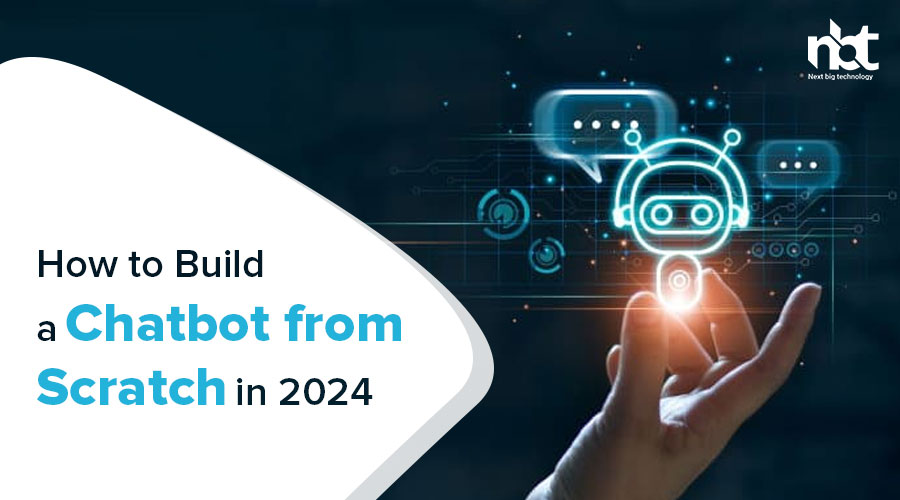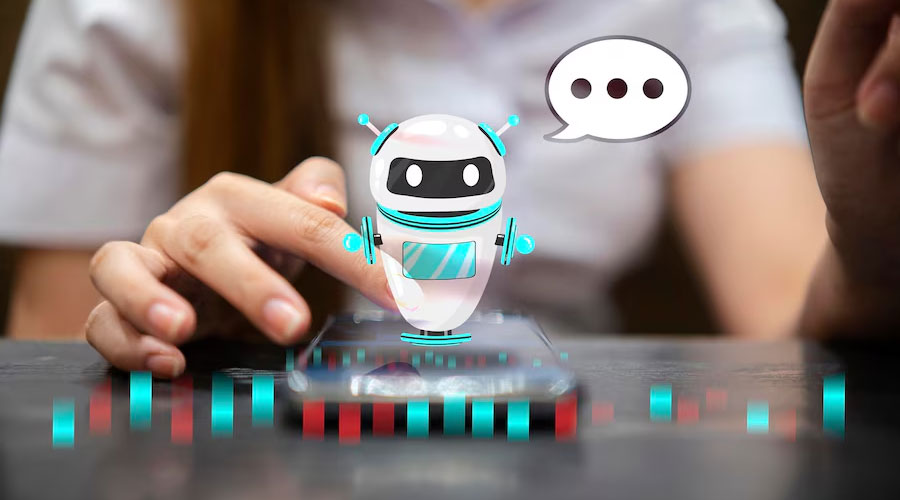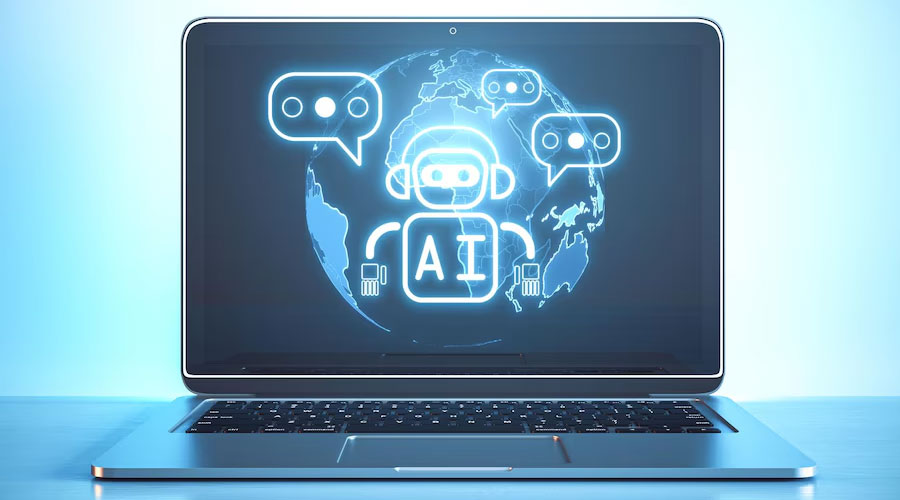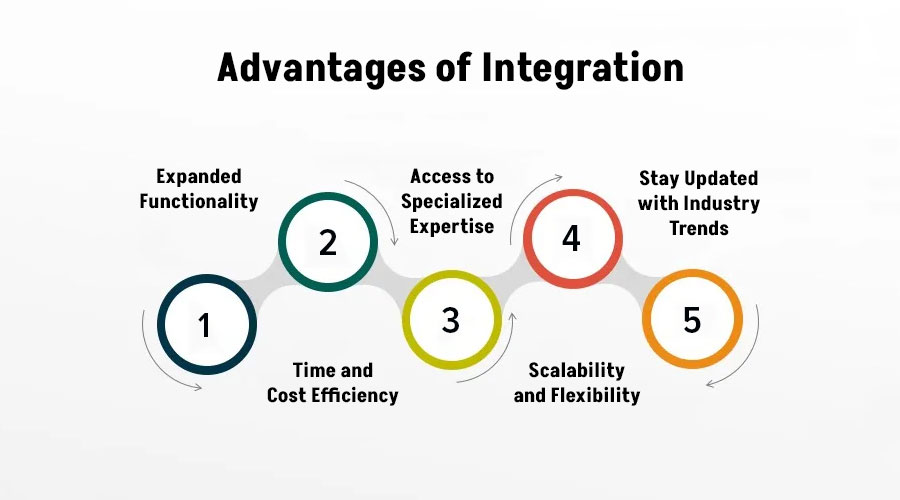Table of Contents
Introduction to Chatbots: Understanding Their Role in 2024
In the digital age, where technology evolves faster than ever, chatbots have emerged as indispensable tools reshaping the landscape of communication and customer service. As we navigate through the intricacies of 2024, understanding the evolving role of chatbots is paramount. Let’s embark on a journey to unravel the potential of these AI-powered marvels and explore how they are shaping various sectors in the current landscape.
The Rise of Chatbots: Chatbots, powered by artificial intelligence and natural language processing, have swiftly integrated into numerous facets of our daily lives. From resolving customer queries to facilitating seamless transactions, chatbots have become the frontline ambassadors of many businesses. In 2024, their adoption has soared, driven by the need for efficient customer service, personalized interactions, and streamlined processes.
Enhancing Customer Experience: One of the primary roles of chatbots in 2024 is revolutionizing the customer experience landscape. With consumers expecting instant responses and personalized interactions, businesses are turning to chatbots to meet these demands. Through intelligent algorithms, chatbots can engage in natural conversations, understand user intent, and provide timely assistance round the clock. This not only enhances customer satisfaction but also boosts brand loyalty and retention rates.
Optimizing Operations: Beyond customer-facing interactions, chatbots are also instrumental in optimizing internal operations across various industries. In sectors such as healthcare, finance, and e-commerce, chatbots streamline processes by automating routine tasks, scheduling appointments, processing transactions, and providing real-time updates. By offloading repetitive tasks to chatbots, businesses can improve efficiency, reduce costs, and empower employees to focus on higher-value activities.
Personalization at Scale: In 2024, personalization remains a cornerstone of successful customer engagement strategies. Chatbots play a pivotal role in delivering personalized experiences at scale by leveraging data analytics and machine learning algorithms. By analyzing user preferences, past interactions, and behavioral patterns, chatbots can tailor recommendations, offers, and content to meet the unique needs of each individual. This level of personalization not only drives conversions but also fosters deeper connections between brands and consumers.
Driving Innovation: The role of chatbots extends beyond traditional customer service and support functions. In 2024, businesses are leveraging chatbots as catalysts for innovation and differentiation. Whether it’s through conversational commerce, virtual assistants, or AI-driven insights, chatbots are driving new revenue streams, unlocking market opportunities, and reshaping industry standards. By embracing chatbot technology, organizations can stay ahead of the curve and remain competitive in today’s dynamic marketplace.
Challenges and Opportunities: While the potential of chatbots is immense, their widespread adoption is not without challenges. Concerns regarding data privacy, security, and the ethical implications of AI continue to be areas of scrutiny. However, with proper regulations, transparency, and ethical frameworks in place, these challenges can be addressed, paving the way for responsible and sustainable integration of chatbots into various domains.
Defining Your Chatbot’s Purpose and Scope
In today’s digital age, chatbots have emerged as invaluable tools for businesses seeking to enhance customer service, streamline operations, and engage with their audience more effectively. However, to harness the full potential of a chatbot, it’s crucial to define its purpose and scope clearly. This article delves into the essential steps involved in crafting a robust framework for your chatbot’s mission and boundaries.
Understanding the Purpose:
Before diving into the technicalities of building a chatbot, it’s imperative to articulate its purpose. Start by identifying the specific problems or needs your chatbot aims to address. Whether it’s providing customer support, facilitating sales, or offering information, a well-defined purpose will guide the development process and ensure that your chatbot delivers tangible value to users.
Consider conducting market research and gathering insights from your target audience to gain a deeper understanding of their preferences and pain points. This information will help you tailor your chatbot’s purpose to align with the needs of your users effectively.
Defining the Scope:
Once you’ve established the purpose, it’s time to define the scope of your chatbot. Scope refers to the range of tasks and interactions that your chatbot is designed to handle. To determine the scope, consider the following factors:
- User Requirements: Analyze the expectations and requirements of your target users. What tasks do they expect the chatbot to perform? Understanding user needs will enable you to prioritize functionalities and features accordingly.
- Technical Capabilities: Assess the technical capabilities of your chatbot platform or development team. Determine what functionalities are feasible within the constraints of your resources and technology stack.
- Integration with Existing Systems: Consider how your chatbot will integrate with existing systems and workflows within your organization. Will it need access to databases, APIs, or third-party services to fulfill its purpose effectively?
- Language and Tone: Define the language and tone that your chatbot will adopt in its interactions with users. Whether it’s formal, casual, or conversational, consistency in tone is essential for building a cohesive user experience.
- Handling User Queries: Outline the types of user queries and interactions that your chatbot will handle. Will it be capable of providing personalized recommendations, troubleshooting issues, or processing transactions?
Iterative Development and Testing:
Once you’ve established the purpose and scope of your chatbot, it’s time to embark on the development process. However, building a chatbot is not a one-time endeavor; it requires iterative development and testing to refine its performance continually.
Start by creating a prototype or minimum viable product (MVP) of your chatbot to gather feedback from users. Iterate based on user input, making improvements and adjustments to enhance its functionality and usability.
Throughout the development process, conduct thorough testing to identify and address any bugs, errors, or usability issues. Test the chatbot across different devices, platforms, and scenarios to ensure a seamless user experience.
Choosing the Right Technology Stack for Your Chatbot
In today’s fast-paced digital landscape, chatbots have become indispensable tools for businesses aiming to enhance customer engagement, streamline operations, and boost efficiency. However, developing an effective chatbot requires careful consideration of various factors, with one of the most crucial being the choice of technology stack. Selecting the right technology stack can significantly impact the performance, scalability, and flexibility of your chatbot. In this guide, we’ll explore key considerations to help you choose the perfect technology stack for your chatbot project.
- Define Your Chatbot Requirements: Before diving into selecting a technology stack, it’s essential to clearly define your chatbot’s objectives, functionalities, and target audience. Determine whether your chatbot will be rule-based, AI-powered, or a hybrid model. Understand the platforms and channels where your chatbot will operate, such as websites, messaging apps, or voice assistants.
- Consider Programming Languages: The choice of programming language is fundamental in determining the capabilities and compatibility of your chatbot. Popular languages for chatbot development include Python, JavaScript, and Java. Python is favored for its simplicity, extensive libraries, and robust frameworks like TensorFlow and PyTorch for machine learning-based chatbots. JavaScript, particularly with Node.js, offers real-time capabilities and seamless integration with web applications. Java is known for its scalability and reliability, making it suitable for enterprise-level chatbots.
- Evaluate Natural Language Processing (NLP) Frameworks: NLP is at the heart of conversational AI, enabling chatbots to understand and respond to user queries naturally. When selecting a technology stack, consider NLP frameworks such as Dialogflow, Wit.ai, and Microsoft Bot Framework. These frameworks provide pre-built NLP models, entity recognition, and intent classification, reducing development time and effort.
- Choose a Suitable Bot Development Framework: Bot development frameworks simplify the process of building and deploying chatbots by offering pre-built components, APIs, and integrations. Popular frameworks like Microsoft Bot Framework, Botpress, and Rasa provide comprehensive toolsets for creating chatbots across various platforms. Evaluate each framework based on its features, community support, documentation, and scalability.
- Assess Integration Capabilities: Seamless integration with existing systems and third-party services is crucial for enhancing the functionality and user experience of your chatbot. Consider the technology stack’s compatibility with APIs, databases, CRM systems, and messaging platforms like Facebook Messenger and Slack. Ensure that the chosen stack supports webhook integration for real-time data exchange and interoperability.
- Scalability and Performance: Scalability is vital, especially for chatbots expected to handle large volumes of concurrent users. Evaluate the scalability of your chosen technology stack in terms of handling increased workload, optimizing resource utilization, and maintaining performance under peak loads. Cloud-based platforms like AWS, Azure, and Google Cloud offer scalable infrastructure for hosting and deploying chatbots.
- Security and Compliance: Chatbots often handle sensitive information and must adhere to data protection regulations such as GDPR and HIPAA. Choose a technology stack that prioritizes security features such as encryption, authentication, and data anonymization. Ensure compliance with industry standards and regulations to safeguard user privacy and build trust.
- Community Support and Documentation: Opt for a technology stack with a vibrant developer community and extensive documentation. Active community support ensures timely assistance, troubleshooting, and access to valuable resources such as tutorials, forums, and sample code. Evaluate the quality and comprehensiveness of documentation to facilitate smooth development and maintenance of your chatbot.
Choosing the Right Technology Stack for Your Chatbot
In today’s fast-paced digital landscape, chatbots have become indispensable tools for businesses aiming to enhance customer engagement, streamline operations, and boost efficiency. However, developing an effective chatbot requires careful consideration of various factors, with one of the most crucial being the choice of technology stack. Selecting the right technology stack can significantly impact the performance, scalability, and flexibility of your chatbot. In this guide, we’ll explore key considerations to help you choose the perfect technology stack for your chatbot project.
- Define Your Chatbot Requirements: Before diving into selecting a technology stack, it’s essential to clearly define your chatbot’s objectives, functionalities, and target audience. Determine whether your chatbot will be rule-based, AI-powered, or a hybrid model. Understand the platforms and channels where your chatbot will operate, such as websites, messaging apps, or voice assistants.
- Consider Programming Languages: The choice of programming language is fundamental in determining the capabilities and compatibility of your chatbot. Popular languages for chatbot development include Python, JavaScript, and Java. Python is favored for its simplicity, extensive libraries, and robust frameworks like TensorFlow and PyTorch for machine learning-based chatbots. JavaScript, particularly with Node.js, offers real-time capabilities and seamless integration with web applications. Java is known for its scalability and reliability, making it suitable for enterprise-level chatbots.
- Evaluate Natural Language Processing (NLP) Frameworks: NLP is at the heart of conversational AI, enabling chatbots to understand and respond to user queries naturally. When selecting a technology stack, consider NLP frameworks such as Dialogflow, Wit.ai, and Microsoft Bot Framework. These frameworks provide pre-built NLP models, entity recognition, and intent classification, reducing development time and effort.
- Choose a Suitable Bot Development Framework: Bot development frameworks simplify the process of building and deploying chatbots by offering pre-built components, APIs, and integrations. Popular frameworks like Microsoft Bot Framework, Botpress, and Rasa provide comprehensive toolsets for creating chatbots across various platforms. Evaluate each framework based on its features, community support, documentation, and scalability.
- Assess Integration Capabilities: Seamless integration with existing systems and third-party services is crucial for enhancing the functionality and user experience of your chatbot. Consider the technology stack’s compatibility with APIs, databases, CRM systems, and messaging platforms like Facebook Messenger and Slack. Ensure that the chosen stack supports webhook integration for real-time data exchange and interoperability.
- Scalability and Performance: Scalability is vital, especially for chatbots expected to handle large volumes of concurrent users. Evaluate the scalability of your chosen technology stack in terms of handling increased workload, optimizing resource utilization, and maintaining performance under peak loads. Cloud-based platforms like AWS, Azure, and Google Cloud offer scalable infrastructure for hosting and deploying chatbots.
- Security and Compliance: Chatbots often handle sensitive information and must adhere to data protection regulations such as GDPR and HIPAA. Choose a technology stack that prioritizes security features such as encryption, authentication, and data anonymization. Ensure compliance with industry standards and regulations to safeguard user privacy and build trust.
- Community Support and Documentation: Opt for a technology stack with a vibrant developer community and extensive documentation. Active community support ensures timely assistance, troubleshooting, and access to valuable resources such as tutorials, forums, and sample code. Evaluate the quality and comprehensiveness of documentation to facilitate smooth development and maintenance of your chatbot.
Designing Conversational Flows: User Experience Considerations
In the digital realm, user experience reigns supreme, dictating the success or failure of any application or platform. With the rise of conversational interfaces, such as chatbots and virtual assistants, understanding and implementing effective conversational flows has become paramount. Designing conversational flows that prioritize user experience involves a delicate balance of functionality, intuition, and empathy. Let’s delve into some essential considerations for crafting seamless conversational experiences.
- Understanding User Intent: The cornerstone of any effective conversational flow is understanding user intent. Anticipating what users want to accomplish and guiding them through the process effortlessly is crucial. Conducting thorough user research, including surveys, interviews, and usability testing, can provide invaluable insights into user needs and preferences.
- Natural Language Processing (NLP): Leveraging NLP technologies enables conversational interfaces to understand and interpret user input more accurately. By analyzing language patterns and context, NLP algorithms can extract meaning from user queries and provide relevant responses. Integrating robust NLP capabilities into conversational flows enhances user engagement and satisfaction.
- Personalization and Contextual Awareness: Tailoring the conversation to each user’s preferences and past interactions enhances the overall user experience. Utilizing data analytics and machine learning algorithms, conversational interfaces can adapt their responses based on user history, demographics, and behavior. By maintaining contextual awareness, conversational flows feel more personalized and intuitive.
- Clarity and Simplicity: Strive for clarity and simplicity in conversational design to avoid overwhelming users with unnecessary information or complex interactions. Use concise language, clear prompts, and intuitive navigation to guide users through the conversation seamlessly. Break down complex tasks into smaller, digestible steps to prevent cognitive overload.
- Seamless Integration with Visual Interfaces: In many cases, conversational interfaces complement visual interfaces, such as websites or mobile apps. Ensure smooth integration between conversational flows and visual elements to provide a cohesive user experience. Users should seamlessly transition between conversational interactions and traditional graphical interfaces without friction.
- Feedback and Error Handling: Effective feedback mechanisms are essential for guiding users through the conversation and addressing any errors or misunderstandings gracefully. Provide clear feedback messages to acknowledge user input, confirm actions, and offer assistance when needed. Design error handling mechanisms that anticipate common user mistakes and provide helpful suggestions for resolution.
- Iterative Testing and Optimization: Continuous testing and optimization are integral parts of the design process for conversational flows. Conduct usability tests with real users to identify pain points, gather feedback, and iterate on the design accordingly. A/B testing different conversation paths and variations can help optimize performance and enhance user satisfaction over time.
Natural Language Processing (NLP) Essentials for Chatbot Development
In today’s digital era, chatbots have become ubiquitous, enhancing customer service, streamlining processes, and providing personalized experiences. At the heart of these intelligent conversational agents lies Natural Language Processing (NLP), a branch of artificial intelligence (AI) that empowers machines to understand, interpret, and generate human language. For aspiring developers diving into chatbot creation, mastering NLP is paramount. This guide will delve into the essentials of NLP for chatbot development, equipping you with the knowledge to craft efficient and effective conversational experiences.
Understanding Natural Language Processing (NLP): NLP encompasses a range of techniques and algorithms aimed at enabling computers to interact with humans in natural language. It involves several subfields, including tokenization, part-of-speech tagging, named entity recognition, sentiment analysis, and syntactic parsing. These techniques collectively enable machines to comprehend and respond to human language inputs accurately.
Tokenization: Tokenization is the process of breaking down text into smaller units called tokens, typically words or subwords. This step is crucial for NLP tasks as it lays the foundation for subsequent analysis and processing. By segmenting text into tokens, chatbots can understand the structure of sentences and extract meaningful information.
Part-of-Speech Tagging: Part-of-speech tagging involves assigning grammatical categories (e.g., noun, verb, adjective) to each word in a sentence. This process aids in understanding the syntactic structure of sentences and extracting relevant information. For instance, identifying verbs helps in discerning actions, while nouns provide insight into entities.
Named Entity Recognition (NER): NER is a key NLP task that involves identifying and classifying named entities within text, such as people, organizations, locations, dates, and more. By extracting named entities, chatbots can better understand user queries and provide tailored responses. For example, recognizing “New York” as a location allows the chatbot to offer location-specific information or services.
Sentiment Analysis: Sentiment analysis enables chatbots to gauge the sentiment or emotion expressed in user messages. By analyzing the tone of text inputs, chatbots can adapt their responses accordingly, providing empathetic and personalized interactions. Whether it’s detecting customer satisfaction or addressing grievances, sentiment analysis enhances the conversational experience.
Syntactic Parsing: Syntactic parsing involves analyzing the grammatical structure of sentences to understand their underlying syntax. By parsing sentences, chatbots can grasp the relationships between words and infer meaning more accurately. This understanding facilitates context-aware responses and enables smoother conversational flow.
Integration with Chatbot Development: Integrating NLP capabilities into chatbot development involves leveraging libraries, frameworks, and APIs tailored for natural language understanding. Popular NLP libraries such as NLTK (Natural Language Toolkit), spaCy, and TensorFlow provide a wealth of tools and resources for implementing NLP functionalities in chatbots. Additionally, cloud-based NLP services offered by major tech companies, including Google Cloud Natural Language API and Microsoft Azure Cognitive Services, provide convenient solutions for NLP integration.
Best Practices for NLP-Powered Chatbots:
- Train chatbot models on diverse datasets to improve language understanding and handling of various scenarios.
- Continuously evaluate and fine-tune NLP models to enhance accuracy and performance.
- Implement context-awareness to enable chatbots to maintain coherent conversations and understand user intents across interactions.
- Ensure compliance with data privacy and security regulations when processing user-generated text inputs.
- Provide options for users to escalate to human support when chatbots encounter queries beyond their capabilities.
Implementing Basic Functionality: Response Generation and Intent Recognition
In the realm of conversational AI, mastering response generation and intent recognition is paramount for creating engaging and efficient interactions. Whether you’re developing a chatbot, virtual assistant, or any other AI-driven application, understanding how to implement these basic functionalities lays the foundation for seamless user experiences. In this guide, we’ll delve into the core concepts and best practices for implementing response generation and intent recognition effectively.
Understanding Intent Recognition:
Intent recognition is the process by which a system identifies the purpose or goal behind a user’s input. It involves analyzing the user’s message and determining the underlying intention, which then guides the system’s response. This process typically involves natural language understanding (NLU) techniques such as machine learning algorithms and semantic analysis.
When implementing intent recognition, it’s essential to:
- Define a set of intents: Begin by identifying the different types of user intents that your application needs to understand. These intents represent the various actions or queries that users may express.
- Collect training data: Gather a diverse dataset of user inputs along with their corresponding intents. This data will be used to train your intent recognition model and improve its accuracy over time.
- Choose the right algorithm: Select a suitable machine learning algorithm for intent classification, such as support vector machines (SVM), neural networks, or decision trees. Experiment with different models to find the one that performs best for your specific use case.
- Continuously refine the model: Regularly update and fine-tune your intent recognition model based on user feedback and new data. This iterative process is crucial for maintaining high accuracy and adapting to changes in user behavior.
Implementing Response Generation:
Response generation involves crafting appropriate replies or actions based on the identified user intent. This step is essential for providing meaningful and contextually relevant interactions. Response generation can range from simple predefined templates to more sophisticated natural language generation (NLG) techniques.
Here are some key considerations for implementing response generation:
- Design response templates: Create a library of response templates for each intent category. These templates should cover a range of possible scenarios and be adaptable to different contexts.
- Personalize responses: Tailor responses to the individual user’s preferences, history, and context whenever possible. Personalization can significantly enhance the user experience and foster a sense of rapport.
- Use NLG techniques: Explore advanced NLG approaches such as sequence-to-sequence models or transformer architectures for generating more dynamic and human-like responses. These techniques can help your application adapt to diverse conversational contexts and produce more natural-sounding dialogue.
- Handle fallback scenarios: Implement fallback mechanisms to handle cases where the intent cannot be accurately recognized or the system encounters unexpected input. Provide clear prompts or error messages to guide users back on track.
Best Practices for Integration:
To effectively integrate response generation and intent recognition into your application, consider the following best practices:
- Seamless integration: Ensure smooth communication between the intent recognition and response generation modules to enable real-time interaction and maintain conversational flow.
- Context awareness: Enable your system to maintain context across multiple turns of conversation, allowing for more coherent and relevant responses.
- Continuous monitoring: Monitor system performance and user interactions regularly to identify areas for improvement and optimize the overall user experience.
- Ethical considerations: Pay attention to ethical considerations such as user privacy, transparency, and fairness in AI-driven interactions. Strive to build trust and respect user boundaries throughout the interaction.
Integrating External APIs for Enhanced Functionality
In the digital age, where connectivity and interactivity reign supreme, businesses and developers are constantly seeking ways to enhance the functionality of their applications and websites. One powerful method gaining traction is the integration of external APIs (Application Programming Interfaces). By tapping into the vast array of functionalities offered by external APIs, developers can unlock a world of possibilities and deliver richer, more dynamic user experiences.
Understanding External APIs:
Before delving into the benefits of integrating external APIs, it’s important to grasp what they are and how they work. An API serves as an intermediary that allows different software applications to communicate and interact with each other. External APIs, in particular, are provided by third-party services, granting developers access to their features and data.
Advantages of Integration:
- Expanded Functionality: Perhaps the most obvious advantage of integrating external APIs is the ability to augment your application’s capabilities without having to build everything from scratch. Whether it’s adding geolocation services, payment gateways, social media integration, or advanced analytics, external APIs offer a wealth of functionalities ready to be leveraged.
- Time and Cost Efficiency: Developing complex features internally can be both time-consuming and costly. By integrating external APIs, developers can significantly reduce development time and expenses, as they can utilize pre-built solutions instead of reinventing the wheel.
- Access to Specialized Expertise: External APIs are often developed and maintained by specialists in their respective fields. By integrating these APIs, developers can tap into the expertise and best practices of these providers, ensuring high-quality functionality and reliability.
- Scalability and Flexibility: External APIs enable applications to scale more efficiently by offloading certain tasks to specialized services. This scalability ensures that your application can handle increased loads and adapt to changing requirements without compromising performance or user experience.
- Stay Updated with Industry Trends: Technology evolves rapidly, and keeping up with the latest trends and innovations can be challenging. By integrating external APIs, developers can stay at the forefront of technology without having to invest significant resources in research and development.
Best Practices for Integration:
While integrating external APIs offers numerous benefits, it’s essential to approach the process strategically to maximize the potential advantages. Here are some best practices to consider:
- Thorough Research: Before selecting an external API, conduct comprehensive research to ensure it meets your specific requirements in terms of functionality, reliability, scalability, and pricing.
- Secure Authentication: Implement robust authentication mechanisms to secure communication between your application and the external API. This may involve using API keys, OAuth, or other authentication protocols recommended by the API provider.
- Error Handling: Anticipate and handle errors gracefully to prevent disruptions to your application’s functionality. Implement appropriate error-handling mechanisms to handle timeouts, rate limits, and other potential issues that may arise when interacting with external APIs.
- Optimization and Monitoring: Regularly monitor the performance of your application’s interactions with external APIs and optimize as necessary to ensure optimal performance and efficiency. This may involve fine-tuning API usage, caching responses, or implementing rate limiting strategies.
- Compliance with Terms of Service: Familiarize yourself with the terms of service of the external APIs you integrate and ensure compliance to avoid potential legal issues or service disruptions.
Leveraging Machine Learning for Smarter Conversations
In today’s digital age, communication has evolved far beyond traditional methods. With the advent of machine learning, conversations have become more dynamic, personalized, and efficient. Leveraging machine learning algorithms, businesses and individuals alike are experiencing a revolution in the way they interact and engage with others.
Machine learning, a subset of artificial intelligence (AI), empowers systems to learn from data and improve over time without explicit programming. When applied to conversations, machine learning algorithms can analyze vast amounts of text and speech data to extract meaningful insights, understand context, and predict responses. This capability enables a wide range of applications aimed at making conversations smarter and more productive.
One of the most notable applications of machine learning in conversations is in chatbots and virtual assistants. These intelligent systems are capable of understanding natural language, interpreting user queries, and providing relevant responses in real-time. By continuously learning from user interactions, chatbots can adapt their responses to provide more accurate and helpful assistance, ultimately enhancing the overall user experience.
Moreover, machine learning can be used to personalize conversations based on individual preferences and behavior. By analyzing past interactions and user data, systems can tailor responses and recommendations to suit each user’s unique needs and preferences. This level of personalization not only improves user satisfaction but also increases engagement and conversion rates for businesses.
Furthermore, machine learning algorithms can facilitate sentiment analysis and emotion recognition in conversations. By analyzing text and speech patterns, systems can identify the underlying sentiment of a conversation and adjust their responses accordingly. This capability is particularly valuable in customer service scenarios, where understanding the emotional state of the customer can help in providing more empathetic and effective support.
In addition to improving the quality of conversations, machine learning can also optimize communication workflows and processes. For example, predictive analytics algorithms can anticipate customer inquiries and proactively address them, reducing response times and enhancing efficiency. Similarly, machine learning-powered recommendation engines can suggest relevant conversation topics or actions based on user behavior, leading to more meaningful and engaging interactions.
Top Chatbot from Scratch Development Companies
In the dynamic landscape of digital interaction, chatbots have emerged as indispensable tools for businesses aiming to enhance customer engagement, streamline processes, and drive efficiency. Crafting a chatbot from scratch demands expertise, innovation, and a profound understanding of user needs. In this article, we’ll unveil the top chatbot development companies renowned for their prowess in building bespoke chatbot solutions from the ground up.
-
-
Next Big Technology:

Focus Area
- Mobile App Development
- App Designing (UI/UX)
- Software Development
- Web Development
- AR & VR Development
- Big Data & BI
- Cloud Computing Services
- DevOps
- E-commerce Development
Industries Focus
- Art, Entertainment & Music
- Business Services
- Consumer Products
- Designing
- Education
- Financial & Payments
- Gaming
- Government
- Healthcare & Medical
- Hospitality
- Information Technology
- Legal & Compliance
- Manufacturing
- Media
-
- IBM Watson: Powered by artificial intelligence, IBM Watson offers a suite of tools and services for building advanced chatbots from scratch. Leveraging natural language processing (NLP) and machine learning capabilities, IBM Watson enables businesses to create chatbots that understand and respond to user queries effectively. With robust integration options and extensive customization features, IBM Watson empowers businesses to deploy chatbots tailored to their specific needs.
- Microsoft Azure: Microsoft Azure provides comprehensive resources for developing chatbots from scratch, leveraging its Azure Bot Service. Equipped with powerful AI capabilities, Azure Bot Service enables businesses to create intelligent chatbots capable of understanding natural language, processing user intent, and delivering personalized responses. With seamless integration with other Microsoft services and tools, Azure Bot Service offers scalability and flexibility for businesses of all sizes.
- Google Cloud Dialogflow: Google Cloud Dialogflow offers a user-friendly platform for building chatbots from scratch, powered by Google’s advanced AI technologies. With its intuitive interface and robust development tools, Dialogflow allows businesses to design chatbots that offer rich conversational experiences across multiple channels. Leveraging Google’s vast knowledge graph and machine learning algorithms, Dialogflow enables businesses to create chatbots that continuously learn and improve over time.
- ChatGPT by OpenAI: ChatGPT, developed by OpenAI, offers a unique approach to chatbot development, combining the power of language models with human-like conversational abilities. By fine-tuning OpenAI’s GPT models, businesses can create chatbots that engage users in natural and meaningful conversations. With its versatility and adaptability, ChatGPT empowers businesses to build chatbots for various use cases, from customer support to virtual assistants.





















